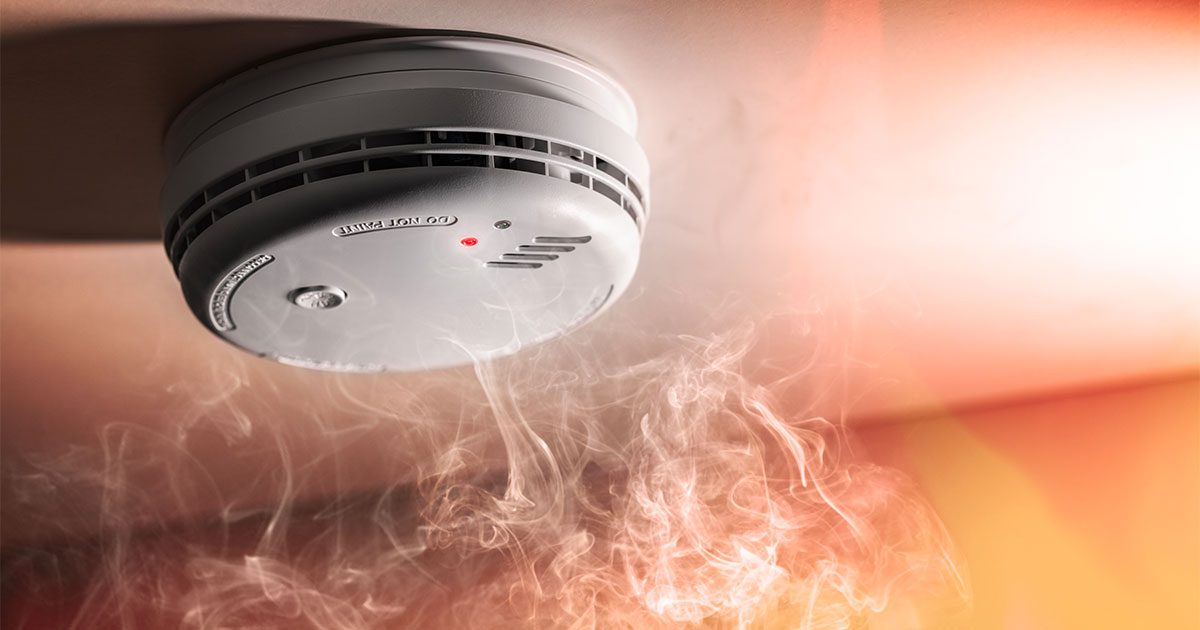Can Vapes Be Detected by Smoke Alarms?

Ever caught yourself taking a quick vape where you probably shouldn’t, wondering if that small cloud might trigger the alarm? You’re not alone. Many vapers have faced the irresistible temptation to take a puff even in places where it might not be the best idea. Whether it’s a cozy hotel room, a relaxing restaurant, or a lively bar, these environments can be enticing for vapers, yet they come with the risk of accidentally setting off a fire alarm.
So, can vaping really set off smoke detectors? Let’s explore the relationship between vaping and smoke alarms to find out whether your vape could be detected.
Can Vaping Trigger a Smoke Alarm?
Vaping is often viewed as a less intrusive alternative to smoking, but the dense vapor it produces can raise concerns about triggering smoke alarms. While it’s well-known that cigarette smoke can set off these alarms if not properly ventilated, the question arises: can vapor from e-cigarettes do the same?
The sensitivity of a smoke detector plays a significant role in whether it will respond to vapor. Some detectors are highly sensitive and can indeed be triggered by the dense clouds of vapor produced by vaping. The likelihood of this happening depends on the type of smoke detector and the amount of vapor generated.
Smoke alarms generally fall into two categories: ionization alarms and photoelectric alarms. Ionization alarms are more responsive to small particles, often found in smoke from flaming fires, while photoelectric alarms are better at detecting larger particles from smoldering fires. Given that vapor consists of fine particles, it has a higher chance of activating an ionization alarm. However, if enough vapor is produced, either type of alarm could potentially be set off.
In essence, it’s not just a matter of comparing vaping to smoking, but understanding the interaction between smoke (or vapor) and the specific type of smoke detector in use.
Can Vaping Set Off a Fire Alarm?
There’s nothing worse than the abrupt interruption of a fire alarm going off while you’re enjoying a vape. Given how vapes function, it’s understandable why they might activate fire alarms. These alarms are designed to detect airborne particles that resemble smoke, and since vape clouds can be dense and linger, there’s a chance they could be mistaken for smoke by the sensors. However, the likelihood of this happening depends on the type of fire alarm.
Many modern fire alarms come with advanced sensors that can tell the difference between smoke and other particles in the air. Still, this technology isn’t foolproof. In small, enclosed spaces like bathrooms or compact offices, the concentration of vapor particles increases the risk of triggering a fire alarm.


How Do Smoke Alarms and Smoke Detectors Actually Work?
Smoke detectors are designed to monitor the air for the presence of particulates, such as smoke. When these particles are detected, the alarm sounds, alerting people to the possibility of a fire.
There are two main types of smoke detectors: ionization and photoelectric. Ionization smoke detectors contain a small amount of radioactive material between two electrically charged plates. This setup ionizes the air, creating a current. When smoke—or in some cases, vapor—enters the chamber, it disrupts this current, triggering the alarm. Photoelectric smoke alarms work differently. They use a light beam and a sensor that detects scattered light. When smoke particles pass through, they scatter the light beam, causing it to hit the sensor and activate the alarm.
It may sound complex, almost like something out of science fiction, but both types of smoke alarms can detect vapor from electronic cigarettes. However, ionization alarms are particularly sensitive and more likely to be triggered by vape clouds.
Vape clouds consist of small particles that can interfere with these detection systems. This is especially true if large amounts of vapor are exhaled directly toward the detector or in confined spaces where the vapor concentration is higher, increasing the chances of setting off an alarm.
Does Low VG E-Liquid Help Reduce Vapor Density?
For vapers who want to minimize the risk of triggering smoke detectors, using a low VG (vegetable glycerin) e-liquid could be a helpful strategy. VG is well-known for producing thick and dense clouds of vapor. By choosing an e-liquid with lower VG content, you can decrease the vapor’s density, potentially lowering the chance of setting off an alarm.
E-liquids are available in different VG to PG (propylene glycol) ratios. But what role does propylene glycol play? PG is a thinner liquid that generates less visible vapor compared to VG. Opting for a higher PG content means you’ll produce less vapor overall, which might further reduce the likelihood of activating a smoke detector. This simple tweak can be quite effective, particularly in environments where you’re concerned about alarms going off.
However, it’s important to note that the effectiveness of this approach depends on the type of smoke detector in use. Optical alarms and heat detectors could still be triggered even when using a low VG e-liquid.
Modifying Vape Settings to Avoid Triggering Smoke Alarms
If switching your e-liquid doesn’t fully address the issue, adjusting your vape settings might be the solution. Many contemporary vape devices offer customizable settings for temperature and wattage, which can be fine-tuned to reduce the amount of vapor produced.


Reducing the wattage lowers the heat generated by the coil, leading to less vapor with each inhale. Likewise, decreasing the temperature setting can also minimize vapor output. Finding the ideal balance between enjoyable vaping and avoiding large vapor clouds that could activate smoke alarms requires some experimentation.
Frequently Asked Questions About Vaping and Smoke Alarms
Can Vaping Trigger a Smoke Alarm?
Yes, vaping can indeed trigger a smoke alarm, especially if it’s an ionization alarm or if the vapor is particularly dense. The risk is higher in small, enclosed areas where the vapor doesn’t disperse quickly.
Will Vaping Set Off an Airplane Smoke Detector?
Airplane smoke detectors are known for their high sensitivity. Although some people might manage to vape in an airplane lavatory without setting off the alarm, it’s a risky move and generally not recommended.
Is It Safe to Vape in a Hotel Room Without Setting Off the Smoke Alarm?
Hotel smoke detectors are typically very sensitive to ensure the safety of guests. If you need to vape, it’s best to do so near an open window or in a bathroom with the exhaust fan on to reduce the chances of triggering the alarm.
How Can I Avoid Triggering a Smoke Alarm While Vaping?
To prevent setting off smoke alarms, consider using e-liquids with higher PG (propylene glycol) and lower VG (vegetable glycerin) content, adjust your vape settings to produce less vapor, and try to exhale away from detectors.
What Are the Chances of a Vape Setting Off a Fire Alarm?
The likelihood of a vape setting off a fire alarm depends on the type of detector, the concentration of vapor, and the environment. In confined spaces with sensitive detectors, the chances are notably higher.
Summary
Vaping and smoke detectors often don’t mix well, much like oil and water. Various types of alarms, including smoke, fire, optical, and heat detectors, could potentially be triggered by vapor. Therefore, it’s important to be cautious about where you vape and to minimize vapor output by adjusting your device settings and using the appropriate vape juice. If you’re looking for a device that significantly reduces this risk, consider trying the Elf Bar BC10000 Disposable Vape.


